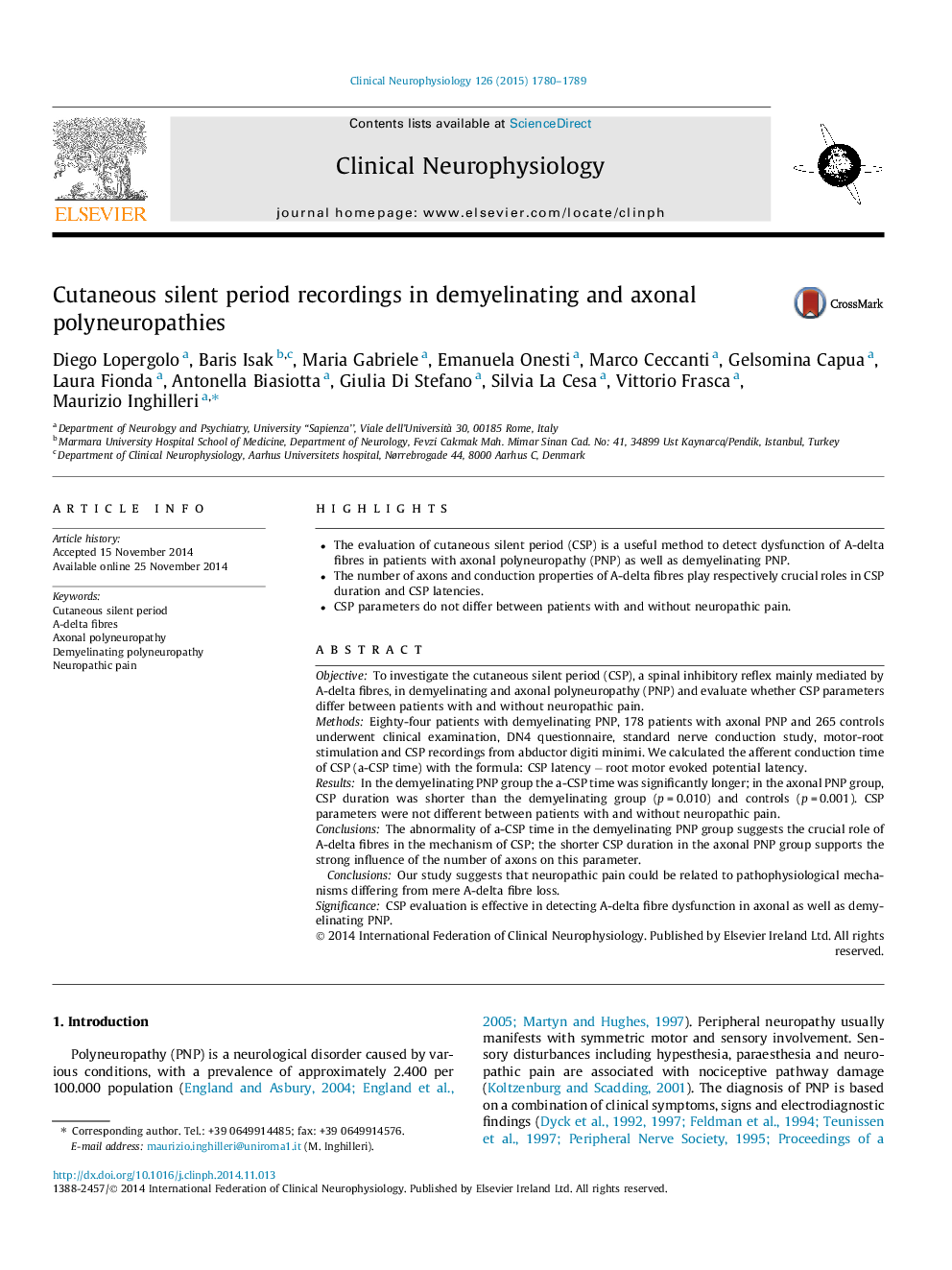| Article ID | Journal | Published Year | Pages | File Type |
|---|---|---|---|---|
| 3042828 | Clinical Neurophysiology | 2015 | 10 Pages |
•The evaluation of cutaneous silent period (CSP) is a useful method to detect dysfunction of A-delta fibres in patients with axonal polyneuropathy (PNP) as well as demyelinating PNP.•The number of axons and conduction properties of A-delta fibres play respectively crucial roles in CSP duration and CSP latencies.•CSP parameters do not differ between patients with and without neuropathic pain.
ObjectiveTo investigate the cutaneous silent period (CSP), a spinal inhibitory reflex mainly mediated by A-delta fibres, in demyelinating and axonal polyneuropathy (PNP) and evaluate whether CSP parameters differ between patients with and without neuropathic pain.MethodsEighty-four patients with demyelinating PNP, 178 patients with axonal PNP and 265 controls underwent clinical examination, DN4 questionnaire, standard nerve conduction study, motor-root stimulation and CSP recordings from abductor digiti minimi. We calculated the afferent conduction time of CSP (a-CSP time) with the formula: CSP latency − root motor evoked potential latency.ResultsIn the demyelinating PNP group the a-CSP time was significantly longer; in the axonal PNP group, CSP duration was shorter than the demyelinating group (p = 0.010) and controls (p = 0.001). CSP parameters were not different between patients with and without neuropathic pain.ConclusionsThe abnormality of a-CSP time in the demyelinating PNP group suggests the crucial role of A-delta fibres in the mechanism of CSP; the shorter CSP duration in the axonal PNP group supports the strong influence of the number of axons on this parameter.Our study suggests that neuropathic pain could be related to pathophysiological mechanisms differing from mere A-delta fibre loss.SignificanceCSP evaluation is effective in detecting A-delta fibre dysfunction in axonal as well as demyelinating PNP.
